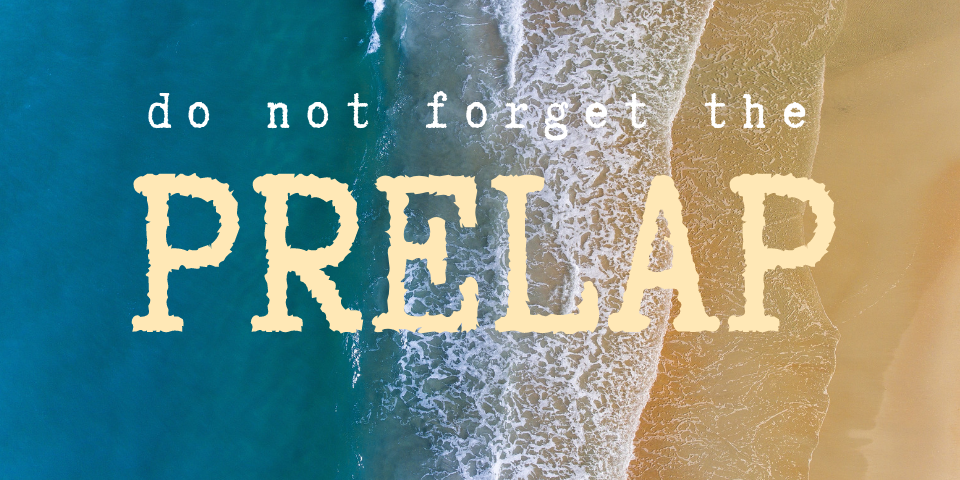You arrive at marking rehearsal.
You’ve reviewed the scene that’s about to be shown to all of the crew.
You know the basic action. You know the lines. Your character doesn’t speak first; the other character does.
The director calls “Action!”
And then you’re all confused.
Your actor is talking! Your actor is speaking first!
And in that confusion, you think you have the wrong scene pulled up. Or you get distracted and don’t see what your actor does. Or you just try to figure out some other explanation of what the heck is happening.
Meanwhile, the scene is rip-roaring along, and your actor already has ten different marks on the floor.
What happened?
Well, it turns out, there was a line before the scene that was actually part of the scene. You simply missed it.
That line is called a prelap.
And here’s what you need to look out for prelaps when you are standing in.
What Is a Prelap?
A prelap is a line of dialogue that is written into a scene prior to the scene you are working on.
A prelap is basically a line that overlaps the onscreen events of the prior scene, but is actually part of the current scene.
In the script, the prelap appears as part of the previous scene.
For example, say there are two scenes, Scene 1 and Scene 2. Let’s say the last line in Scene 1 is a character John speaking a line. John’s line is listed as “PRELAP.” That means that John’s line probably is actually part of Scene 2, it’s just that the line will play over Scene 1.
Why It’s Important to Stand-Ins to Look out for Prelaps
It’s important for stand-ins to look out for prelaps in a scene because usually they signal the true start of a scene.
In our sample above, while the prelap line appears in the text of Scene 1, it is actually a rehearsal part of Scene 2, and during the rehearsal of Scene 2 is where it will be rehearsed and recorded (at least in theory).
Knowing that there is a prelap that actually begins a scene helps stand-ins to be prepared to hear dialogue during the marking rehearsal that does not appear in the current scene but comes from the end of a previous scene. Along with that dialogue may come its own respective blocking.
Prelaps are not always obvious as you read the sides. While they may be clearly marked, if you are only focused on the scene to be shot and not anything that might precede it, you might get surprised when the marking rehearsal starts with lines that don’t appear in the script. Look out for prelaps and you’ll be better prepared to watch marking rehearsal!
Have you any experience with prelaps? How do they affect your stand-in work? Share any insights in the comments below!







Leave A Comment